Ancient church — teeming with treasures and burials — unearthed. See what was found
Nuns wandered sprawling gardens as caretakers tended to blossoming flowers. Inside, some nuns visited with family members in a small room.
At least that’s what experts think life was like at Beaumont Abbey in France at the end of the 16th century.
Archaeologists have spent 14 months excavating the sprawling ancient abbey in Tours, and their finds are offering insight into daily life at the convent, Philippe Blanchard, manager of the excavations, told officials, according to a Feb. 16 news release from the Institut national de recherches archéologiques préventives (INRAP).
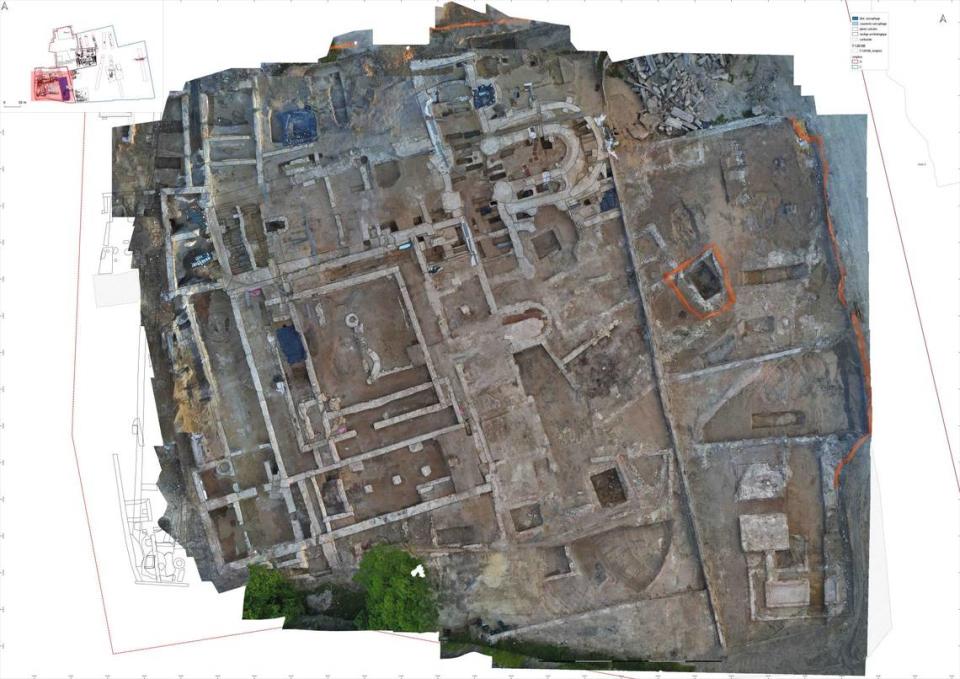
Uncover more archaeological finds
What are we learning about the past? Here are three of our most eye-catching archaeology stories from the past week.
→ 'Unusual' stones on seafloor turn out to be 'thrilling' 11,000-year-old trap in Germany
→ Tractor driver hits stone — and opens 1,700-year-old Roman tomb in Bulgaria. See it
→ 3,500-year-old shipwreck — one of world's oldest — sank carrying items in hot demand
Experts unearthed the entire church, entire cloister, all periphery buildings and facilities, the abbey dwellings, the refectory, the kitchen, the parlor, cellars, ovens, pipes, wash houses, latrines, an icebox, dumping areas and even the gardens. The discovery marks the first time an entire abbey has been excavated in Europe.
The abbey was home to Benedictine nuns — an order founded by St. Benedict. Researchers predict that the number of nuns living in the convent varied.
In the 16th century, at least 60 nuns inhabited the site, Blanchard said. By 1790, only 46 nuns lived at the abbey. There were also domestic staff living at the abbey, bringing the total number of residents to about 100 people.
More than 1,000 burials
Among the abbey’s ruins, archaeologists identified and excavated more than 1,000 burials, according to Blanchard.
Burials were found among various cemeteries, including a parish cemetery, nun cemetery, servant cemetery and the village’s cemetery.
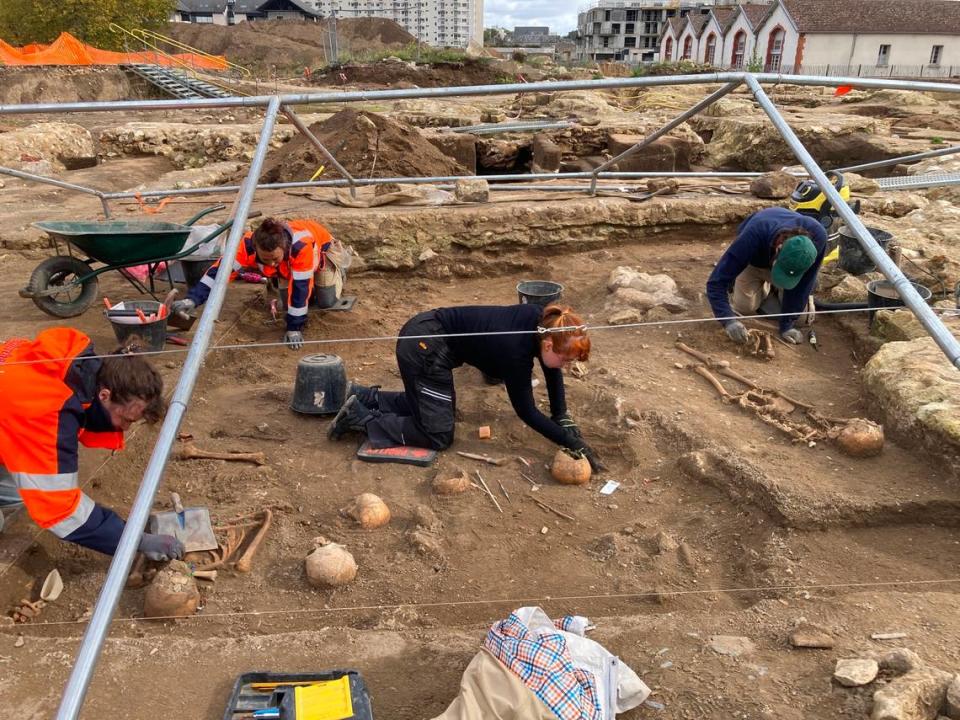
Blanchard said archaeologists unearthed many elaborate tombs that likely belonged to prestigious, high-ranking members of the order. Among these burials are likely the abbesses — the heads of the abbey — as well as benefactors and other people who had important responsibilities in the abbey.
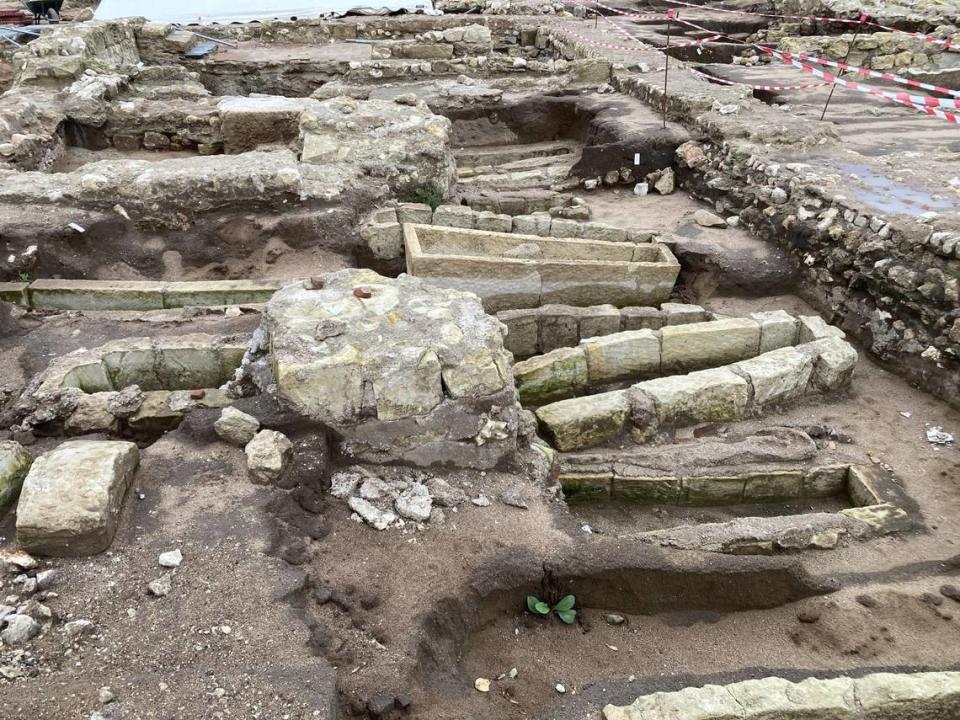
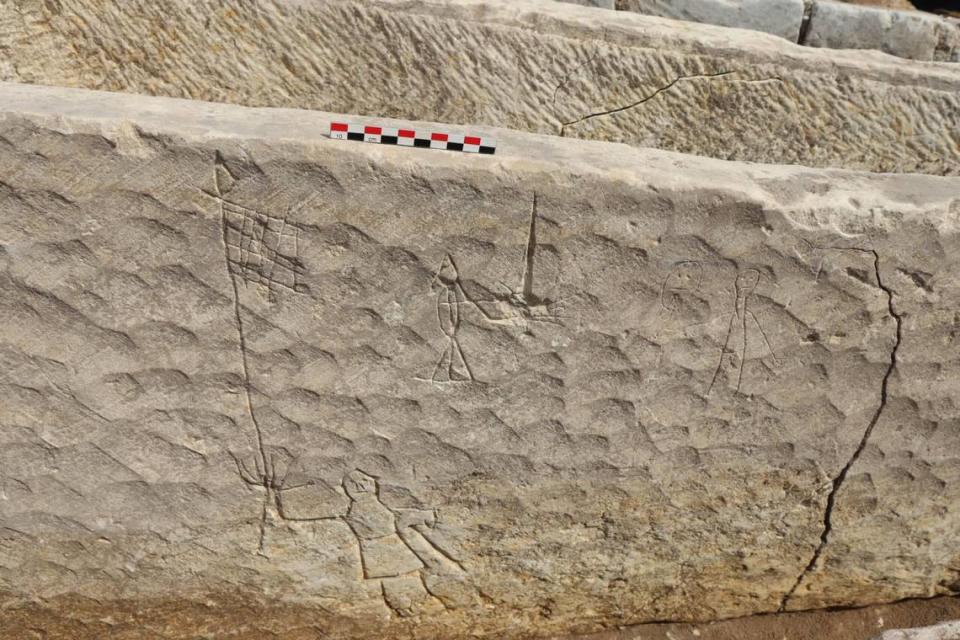
The team of experts plans to study the sexes of the bodies to determine if they are all female, and thus, nuns, or if there are males, or priests, too. Some of the tombs were facing with their heads to the east, indicating they likely belonged to priests.
Some burials held grave goods, including chalices, stoles and fabric. Shards of pots were also discovered, Blanchard said.
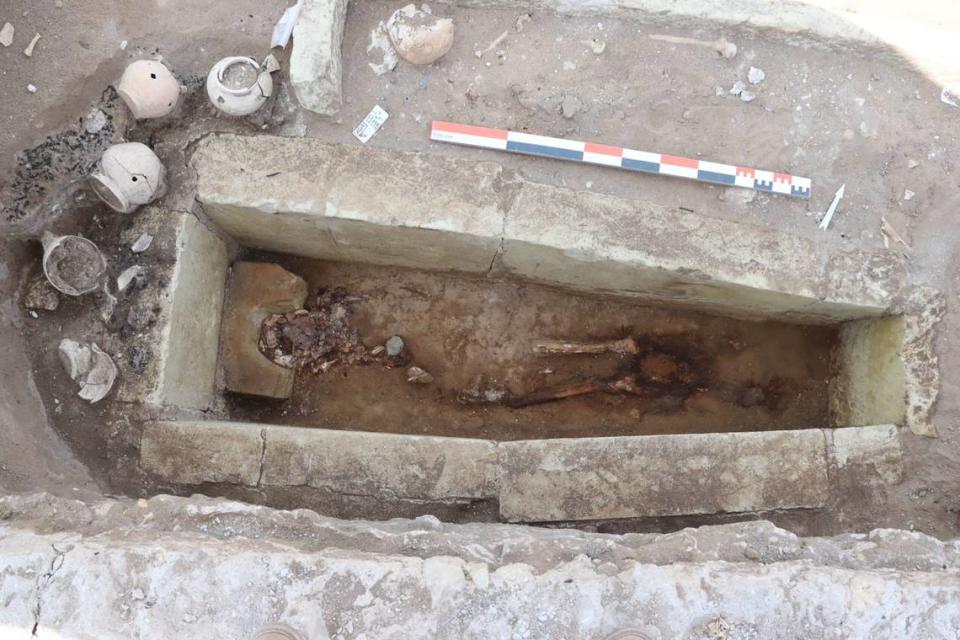
In the church’s nave, nuns were buried in wooden coffins filled with crucifixes, medals and small bone crosses.
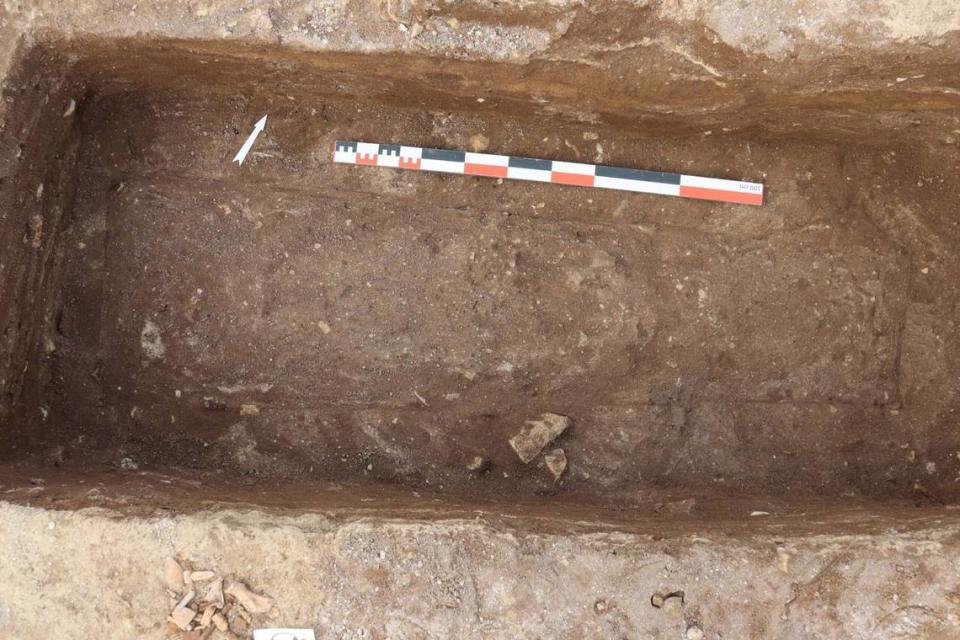
Other artifacts found in the church include medals and rosaries from Rome, likely brought back as souvenirs. A trove of statuettes was also found in a trench.
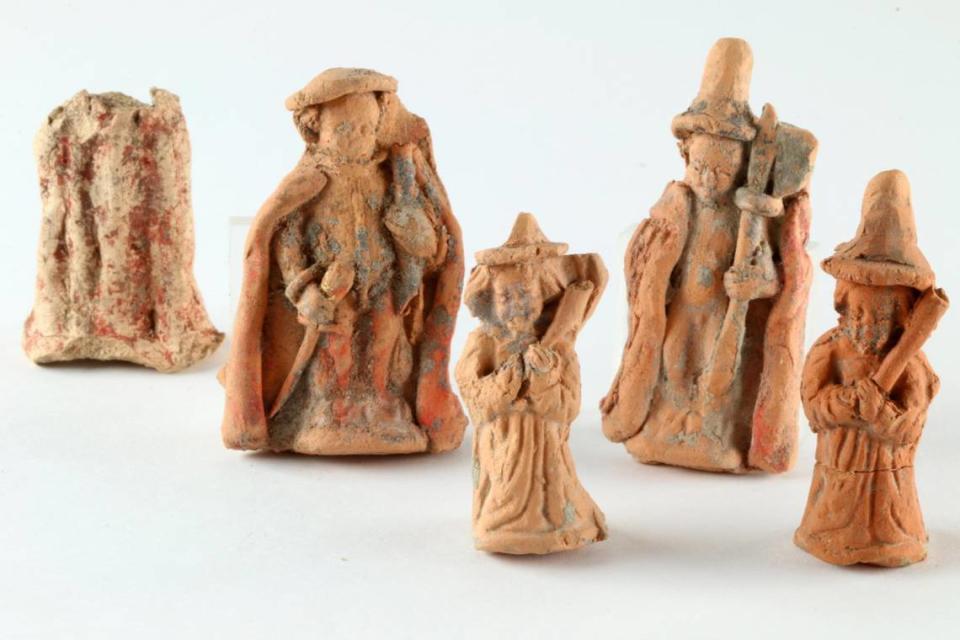
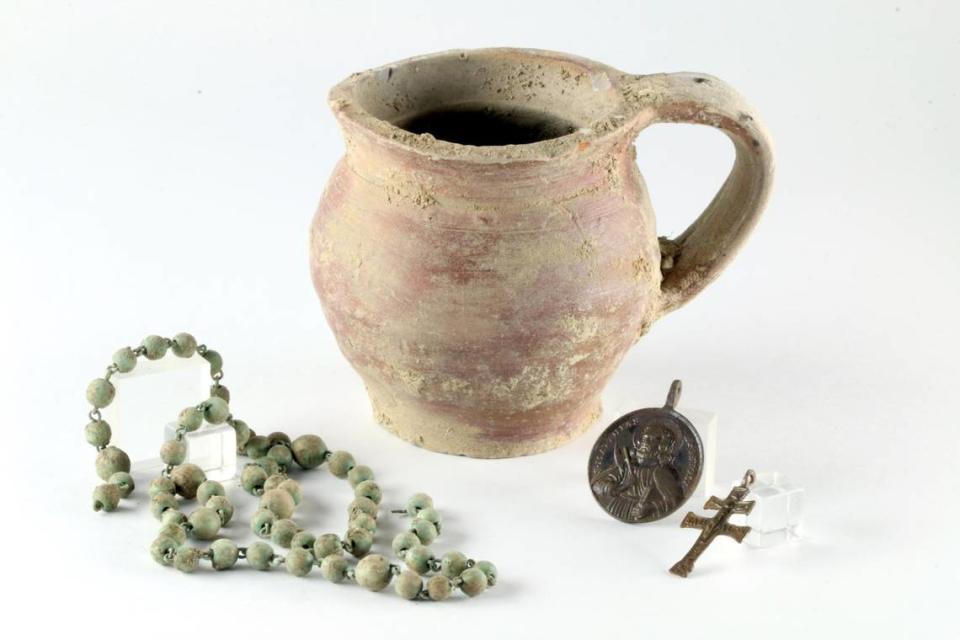
Porcelain objects, including an 18th century tea set, were found in one of the dumps at the site, according to Blanchard. This porcelain was likely imported from China, a sign of its fortune.
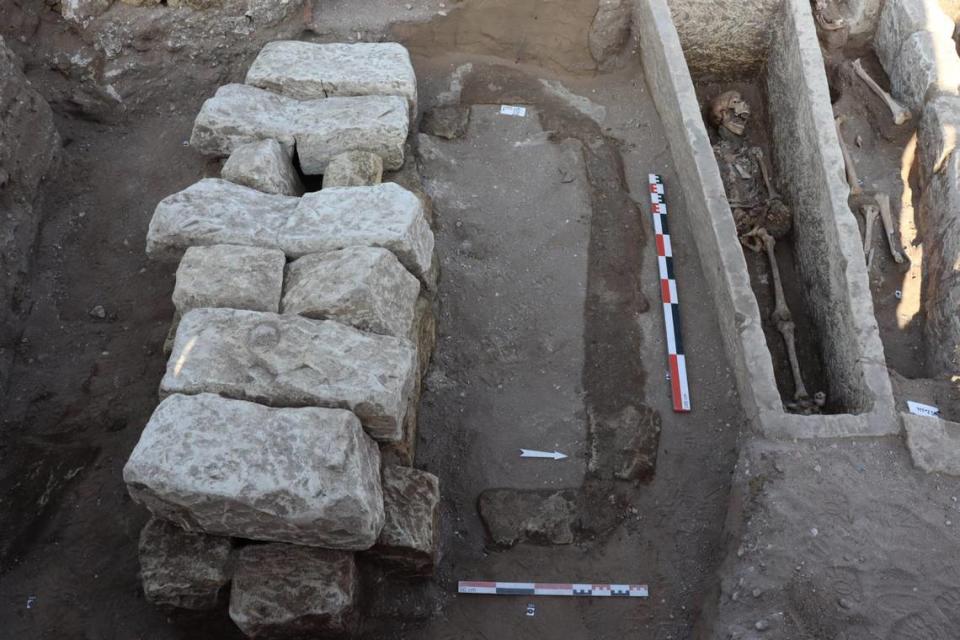
Some infant burials were also found near the ruins of the oldest church structure.
Researchers think the bodies likely belonged to unbaptized children. They appeared to be buried in a place where water running off the church would reach them because this liquid was considered sacred.
Beaumont Abbey’s history
The abbey’s foundations date to 1002, and it was used by Benedictine nuns until 1790 when they were expelled at the start of the French Revolution, Blanchard said. Beneath the church’s ruins, the remains of a village dating to between the ninth century and 10th century were also discovered.
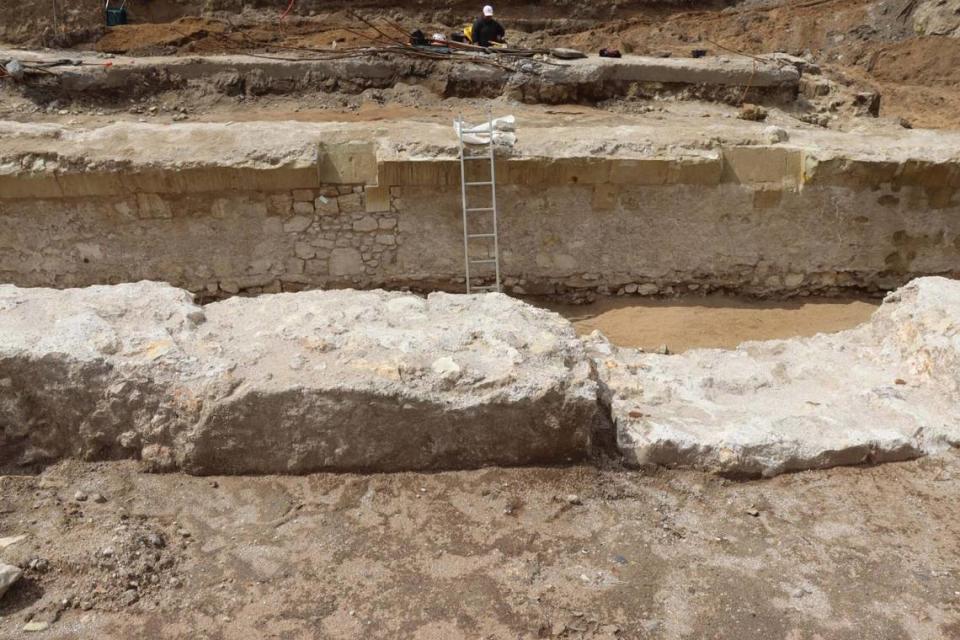
Officials said the village was first mentioned in historic texts in 845 A.D., so researchers knew at that time there was a village and a large cemetery. There may have also been a place of worship.
Three phases of the abbey’s construction were unearthed.
The first includes a small church with a flat apse — a dome-like addition to the building. This church may have been the village’s place of worship, but archaeologists said they have not determined its exact age.
Around the 11th century, the small building was succeeded by a larger church, measuring about 170 feet long, according to experts. This church had an apse, and it was flanked by two small chapels with apses. This structure also had a cloister and peripheral buildings to the south.
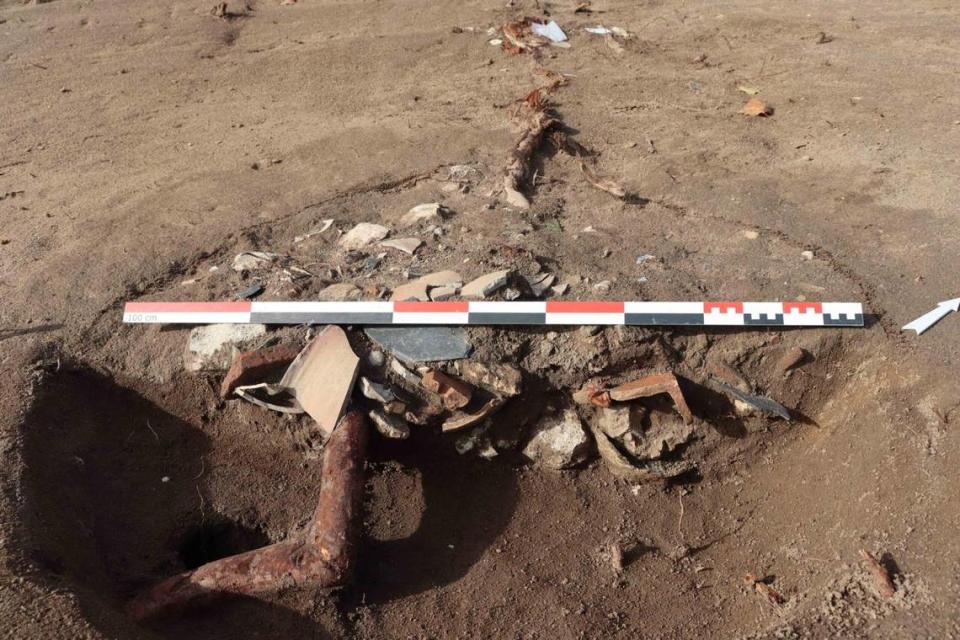
The final structure was built between the 12th and 13th centuries, Blanchard said. An ambulatory — aisles for walking typically placed around the apse — was added to the building, bringing its total length to about 180 feet.
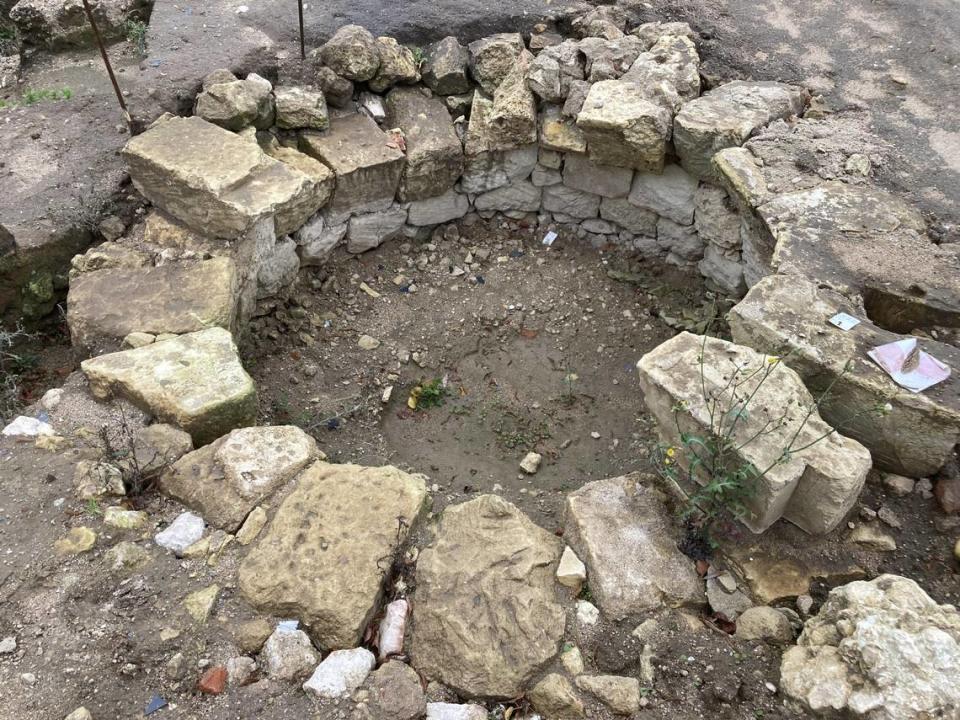
Archaeologists found that the abbey was continuously renovated as it became outdated.
Just as you might renovate your kitchen in 20 years, so did the nuns update their abbey and dwellings, according to Blanchard. Rather than overhauling the structures, they preferred to make them bigger or updated.
Tours is about 150 miles southwest of Paris.
Google Translate was used to translate a release from INRAP.
Cache of coins was hidden in a box underground for 850 years — until now. See it
Ancient settlement teeming with treasures was abandoned 1,900 years ago. See it now
1,900-year-old settlement found near ancient Roman road. See what’s inside the ruins

